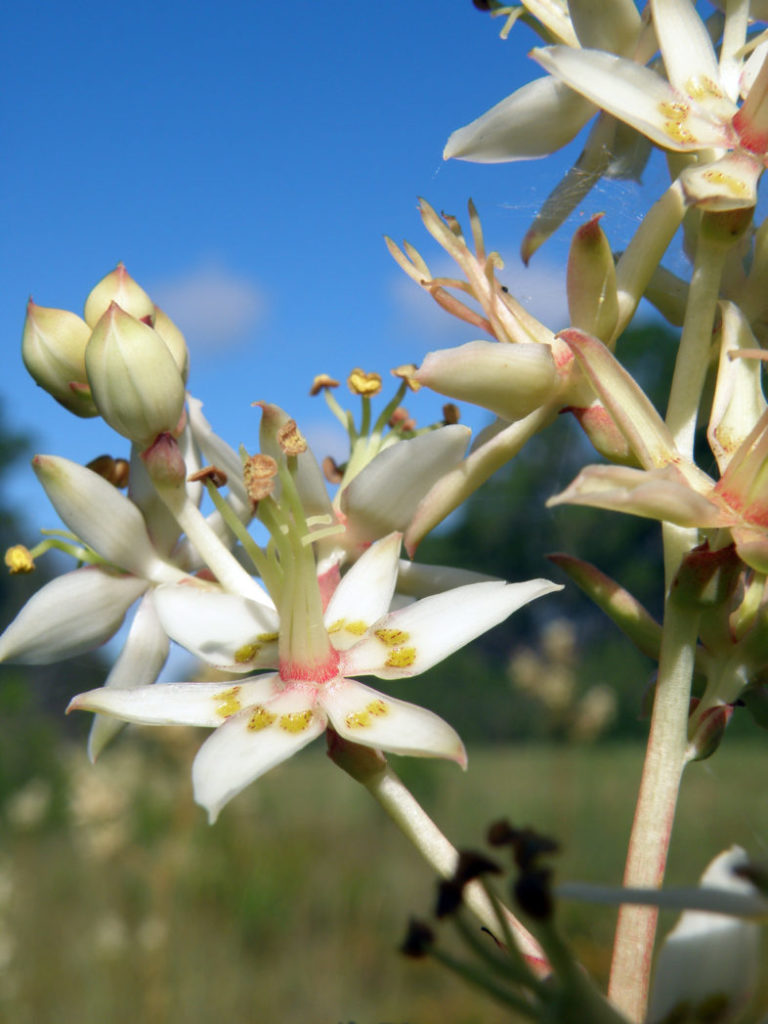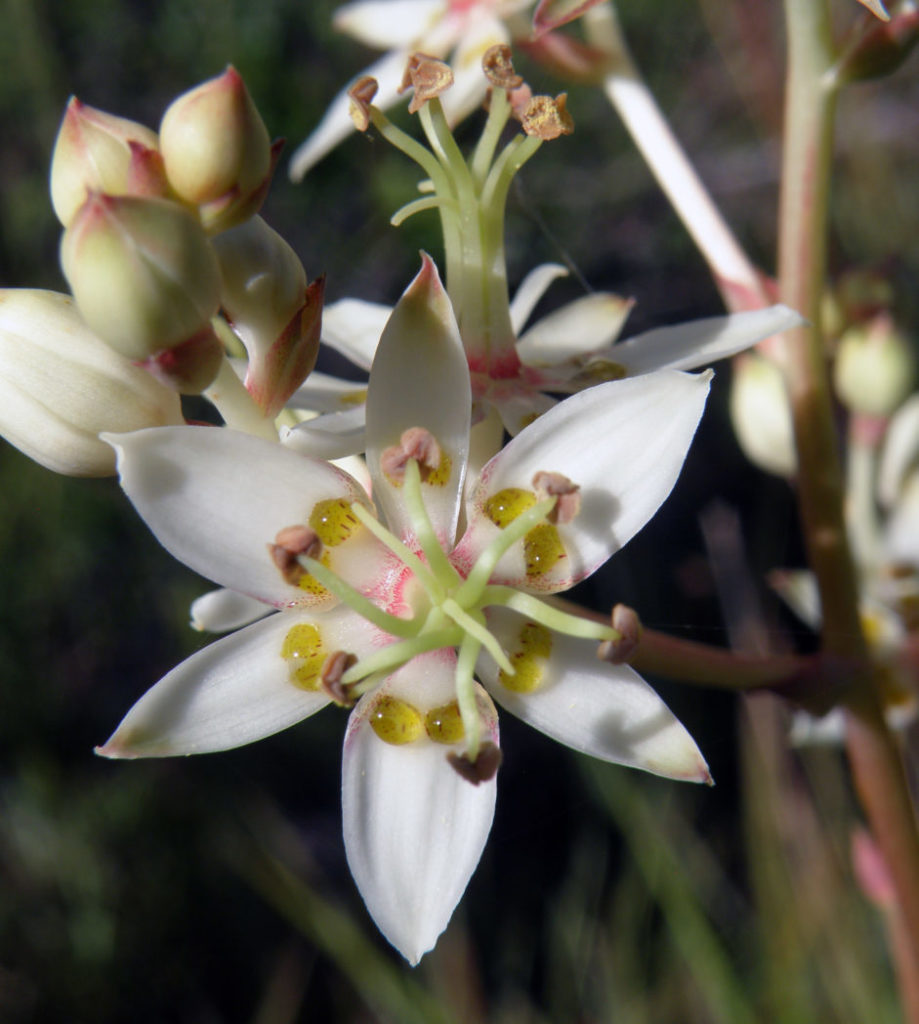Sandbog deathcamas
Pictured above: Sandbog deathcamas (Zigadenus glaberrimus) by Stacey Matrazzo. Click on terms for botanical definitions. View post as a PDF.
Sandbog deathcamas (Zigadenus glaberrimus) is short-lived perennial wildflower. Its many star-shaped flowers are born in loose panicles atop multi-branched stems. Flowers are cream-colored and appear waxy. They have six conspicuous stamens and six tepals. Each tepal has two greenish-gold glands at its inner base. The flower center and tepal tips may be pinkish. Basal leaves form in the spring and are linear and grasslike. Stem leaves are reduced and alternate. Stems are glabrous and may have a reddish hue. Seeds are born in cone-shaped capsules. The flower remains attached to the capsule.
Sandbog deathcamas occurs naturally in wet pine flatwoods, seepage slopes and wet prairies. It blooms summer through fall and attracts bees, butterflies and other pollinators.
The genus Zigadenus once contained 20 species; all but Zigadenus glaberrimus have been reclassified to other genera. All were previously considered members of the Liliaceae (lily) family. The common name “deathcamas” alludes to the similarity in appearance to plants in the camas or Camassia genus, which are edible and often occur in the same habitat. However, Zigadenus glaberrimus is poisonous.

Family: Melanthiaceae
Native range: Panhandle west of Jefferson County
To see where natural populations of sandbog deathcamas have been vouchered, visit florida.plantatlas.usf.edu.
Hardiness: Zones 8A–8B
Soil: Wet to moderately dry, acidic soils
Exposure: Full sun to minimal shade
Growth habit: 3–4’+ tall
Propagation: Seed, division
Garden tips: Sandbog deathcamas is not commercially available. It is best enjoyed in the wild, where it grows in large stands and makes quite a visual impact.
Caution: Zigadenus glaberrimus is poisonous to livestock and humans if consumed.

